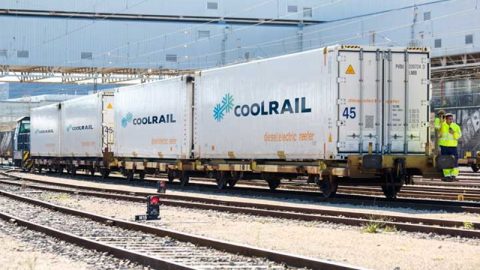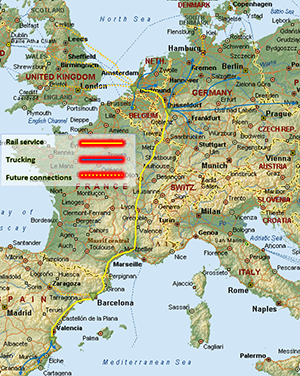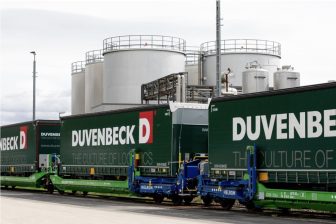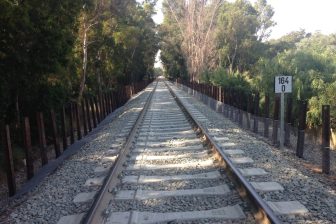
Fresh food rail service Valencia-Rotterdam to be launched next year
A refrigerated rail service between Valencia in Spain and Rotterdam in the Netherlands will be launched in January next year. Initially, the service was scheduled to commence in November this year, with services running up till Cologne in Germany. Fred Lessing, manager of the collective shippers group Cool Rail revealed the updated plan at the Spoorcongres, held in Tiel in the Netherlands last month.
Two dedicated trains will depart per week to embark on the 48-hour journey between the European cities. Cologne is still a destination on the fresh food route. Barcelona may be served in the future, if there is sufficient demand for the stopover. The trains will be fully loaded with 42 45ft containers per journey, Lessing said.
Huge market
Refrigerated food such as fruits and vegetables form a large portion of cargo moved between Spain and the north-west of Europe. Germany is the largest market, receiving 100 thousand containers from Valencia per year. Another 60 thousand containers are shipped to the UK, while 44 thousand units reach the Netherlands. Especially oranges and tangerines are moved in large volumes, making up 45, respectively 42 per cent of all refridgerated freight on this route.
A rail freight link connecting these fruit and vegetable markets has been missing, inspiring Cool Rail to investigate the potential of a dedicated freight train on this corridor. Initiated by Dutch fruit and vegetable wholesaler Bakker Barendrecht and reusable packaging specialists Euro Pool System (EPS), the group of shippers and stakeholders has experimented with the service since October 2016. “The currently 4.032 trucks traveling per road every year can be substituted by 100 fully loaded round trips by train. This can be scaled up to 250 fully loaded rounds trips a year later, resulting in a CO2 reduction of seventy to ninety per cent”, said Lessing.
Challenges
After successful trial runs the shippers agreed to commence with two weekly roundtrips, which should be increased to a daily service between Valencia and Rotterdam as the demand increases. “We need more shippers in order to realise a daily frequency. Based on the shipments available at the moment we can guarantee two fully loaded roundtrips”, said Lessing.
One of the bottlenecks on the corridor is the varying maximum train length in Spain, as the network does not permit trains carrying more than 32 containers. “Renfe is now looking into providing two slots for two trains carrying 21 containers each. This also brings along some flexibility, as these two trains do not neccesarily have to go in the same direction. If there is a second destination in Spain, one train could divert in that direction.”
In fact, the Barcelona-Rotterdam route remains a potential diversion branche. If export demand from Barcelona surges, this could contribute to a scale up of operations during summer. Currently, exports during winter account for five to six times more cargo shipped along the route compared to summer.

Final touch
“Before we can start dedicated operations in January, we have to lay the final touches to the service. We have no definite agreement with infrastructure managers in Belgium and the Netherlands and we have to finalise agreements with operators and railway companies. Morover, we want to optimise the last mile transport”, said Lessing.
In the future, Cool Rail is hoping to reduce the transit time to forty hours, as the Spanish railway network is currently upgraded to match the gauge width of the rest of Europe. At the moment, containers must be loaded onto Spanish trains at the border, a procedure which takes six to seven hours, according to Lessing.





